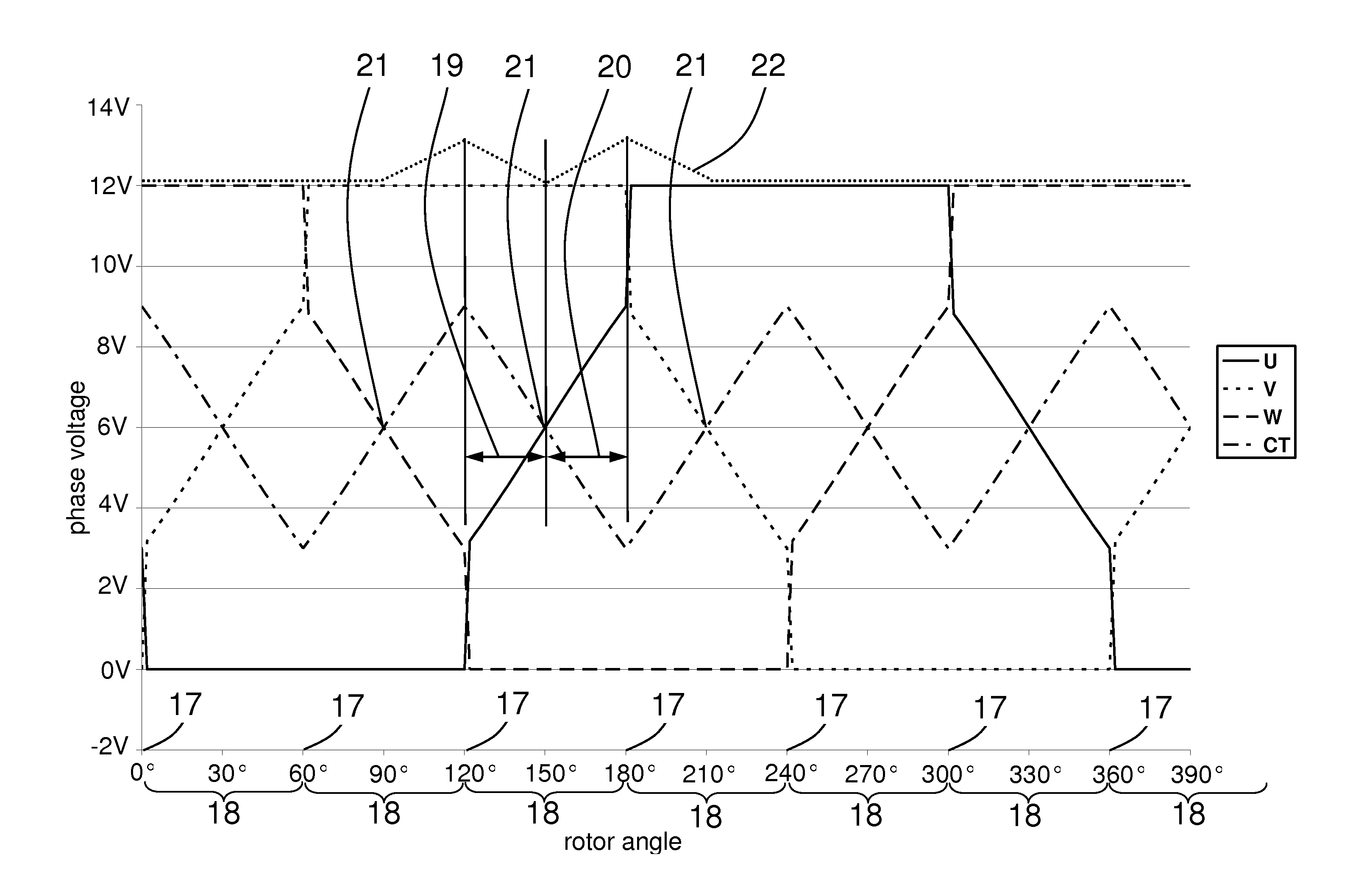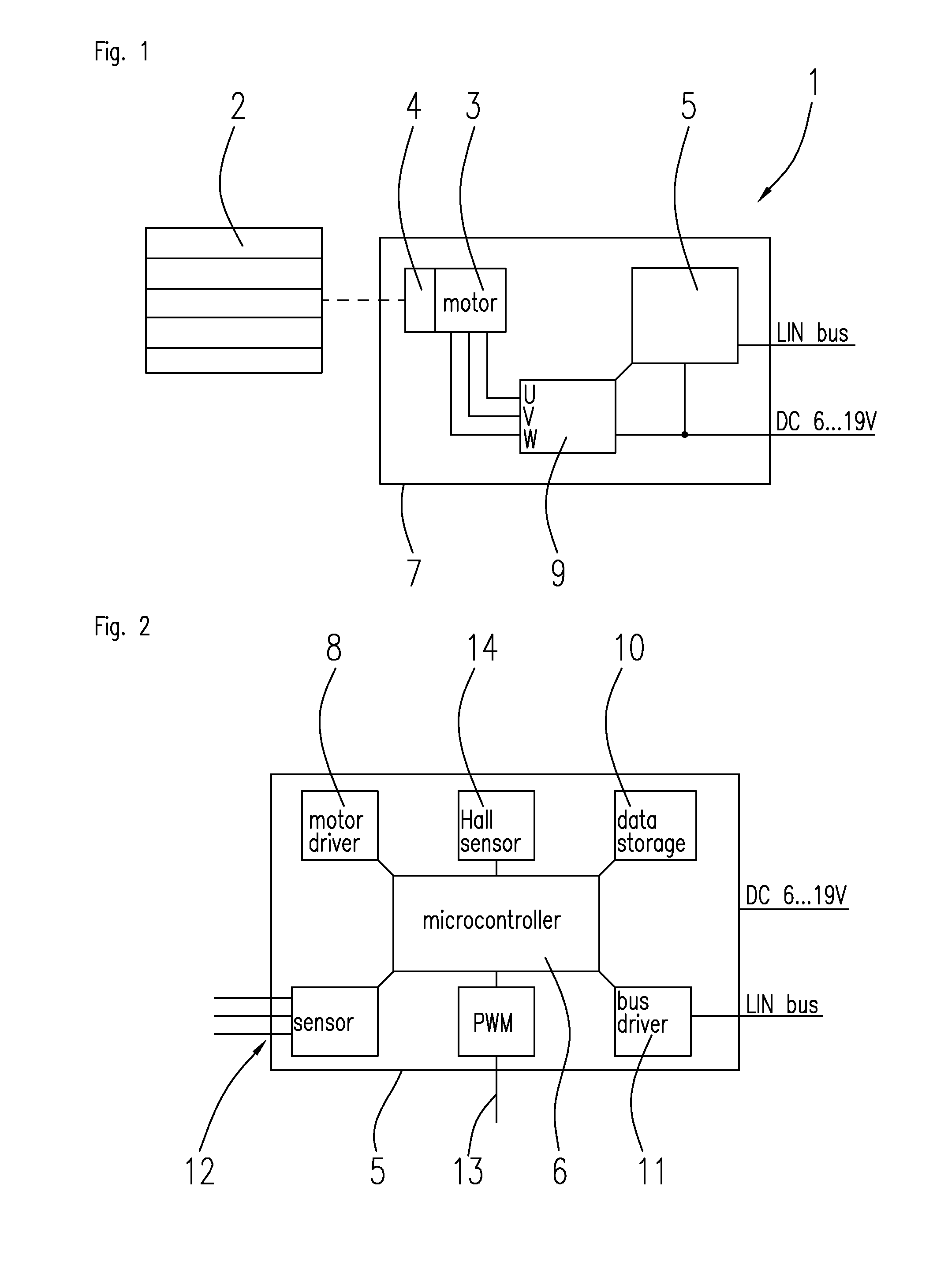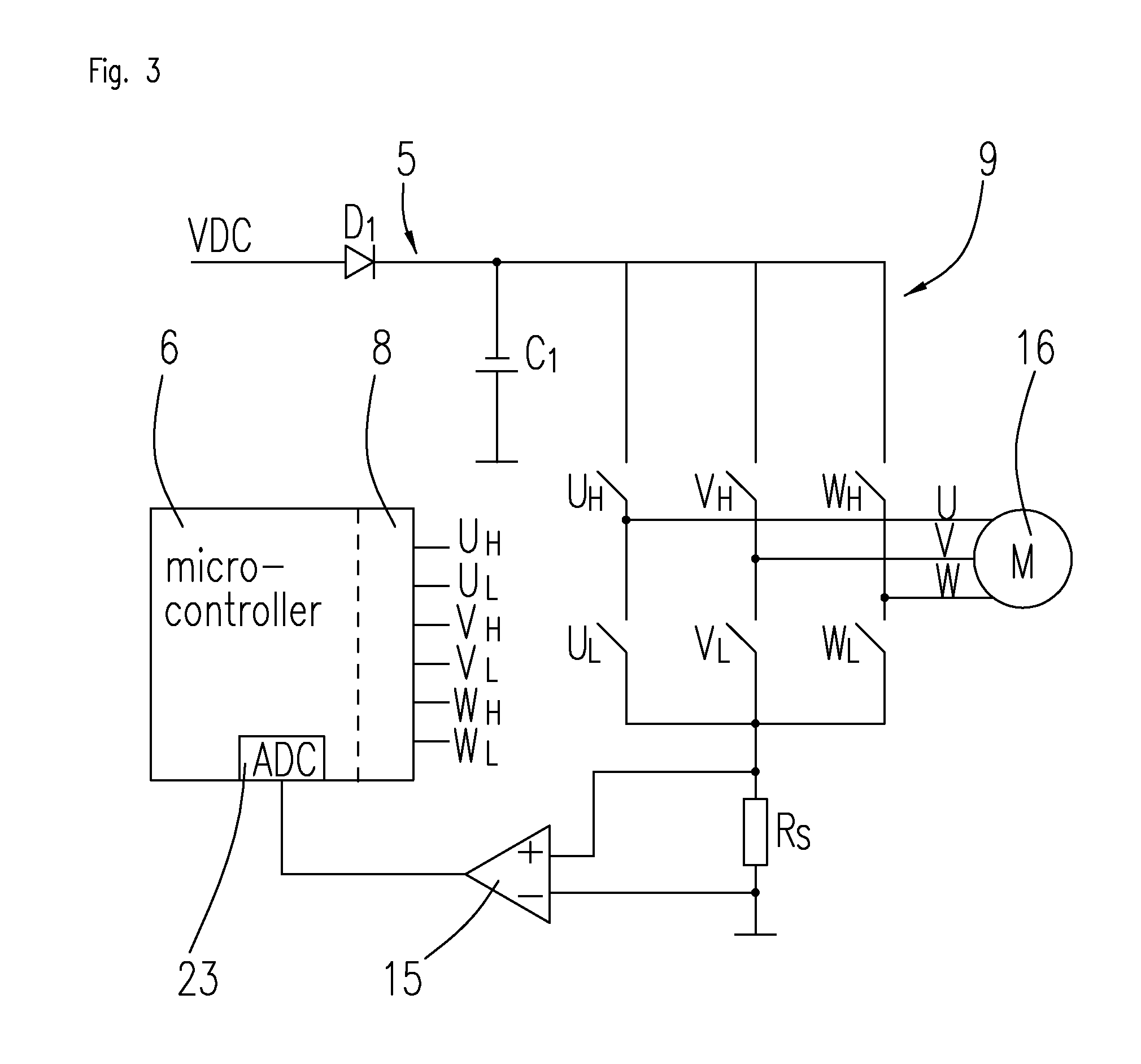Method For Controlling A Brushless Electric Motor
a brushless electric motor and sensorless technology, applied in the direction of motor/generator/converter stopper, electronic commutator control, dynamo-electric converter control, etc., can solve the problems of inability to effectively control the motor, the inability to integrate zero crossing identification, which is necessary for sensorless commutation, and the inability to achieve integrated zero crossing identification, etc., to achieve the effect of increasing the braking effect and dissipating mechanical energy
- Summary
- Abstract
- Description
- Claims
- Application Information
AI Technical Summary
Benefits of technology
Problems solved by technology
Method used
Image
Examples
Embodiment Construction
[0026]Examples of the invention are explained on the basis of an actuator 1 that is used to control air flaps 2 in a motor vehicle (FIG. 1). It is of course clear that the invention is in no way limited to this application and can be used in many other applications without any further changes.
[0027]The actuator 1 is a completely integrated solution in which a drive motor 3, a transmission 4 and the control electronics 5 together with a microcontroller 6 are disposed in a water-and dust-proof housing 7. Owing to its application in a motor vehicle, the actuator 1 is subject to a series of requirements that can only be realized by this integrated design.
[0028]The drive motor 3 is a brushless DC motor that is controlled via a motor driver 8 having a switching bridge 9. The motor driver 8 forms a part of the microcontroller. The switching bridge 9 is controlled by the microcontroller 6.
[0029]The motor has, for example, 6 or 12 magnetic poles and 9 stator slots. The harmonic frequencies i...
PUM
 Login to View More
Login to View More Abstract
Description
Claims
Application Information
 Login to View More
Login to View More - R&D
- Intellectual Property
- Life Sciences
- Materials
- Tech Scout
- Unparalleled Data Quality
- Higher Quality Content
- 60% Fewer Hallucinations
Browse by: Latest US Patents, China's latest patents, Technical Efficacy Thesaurus, Application Domain, Technology Topic, Popular Technical Reports.
© 2025 PatSnap. All rights reserved.Legal|Privacy policy|Modern Slavery Act Transparency Statement|Sitemap|About US| Contact US: help@patsnap.com



